The High Energy Particle Detector (HEPD-02) detects individual incident particles. In particular, for each particle it identifies the type (proton, electron, nucleus), measures the energy and determines the angle between the flight line and the Earth’s magnetic field line to the Equator (pitch angle). HEPD-02 can detect particle flows coming from the Van Allen belts and determine with great accuracy the magnetospheric region of their origin, with the aim of obtaining the energy spectrum and the composition of the particles of the stability bands that suddenly fall into the atmosphere, in case of external disturbances (“Particle burst”).
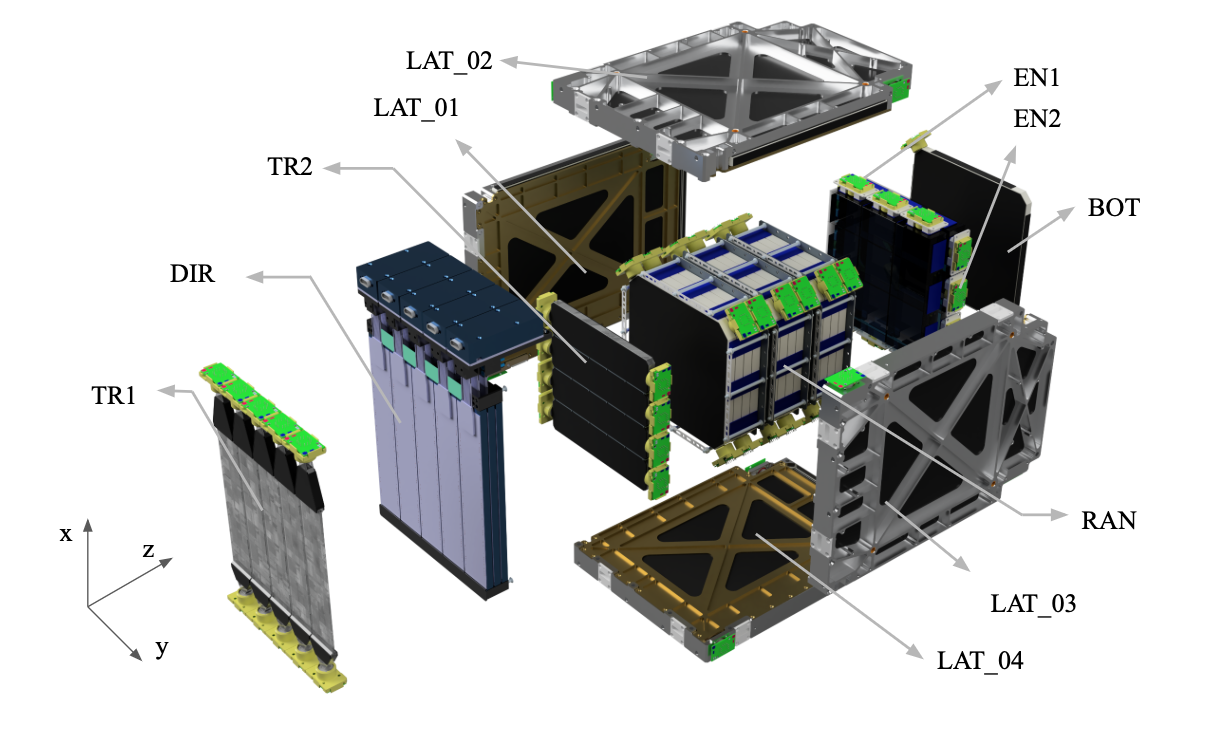
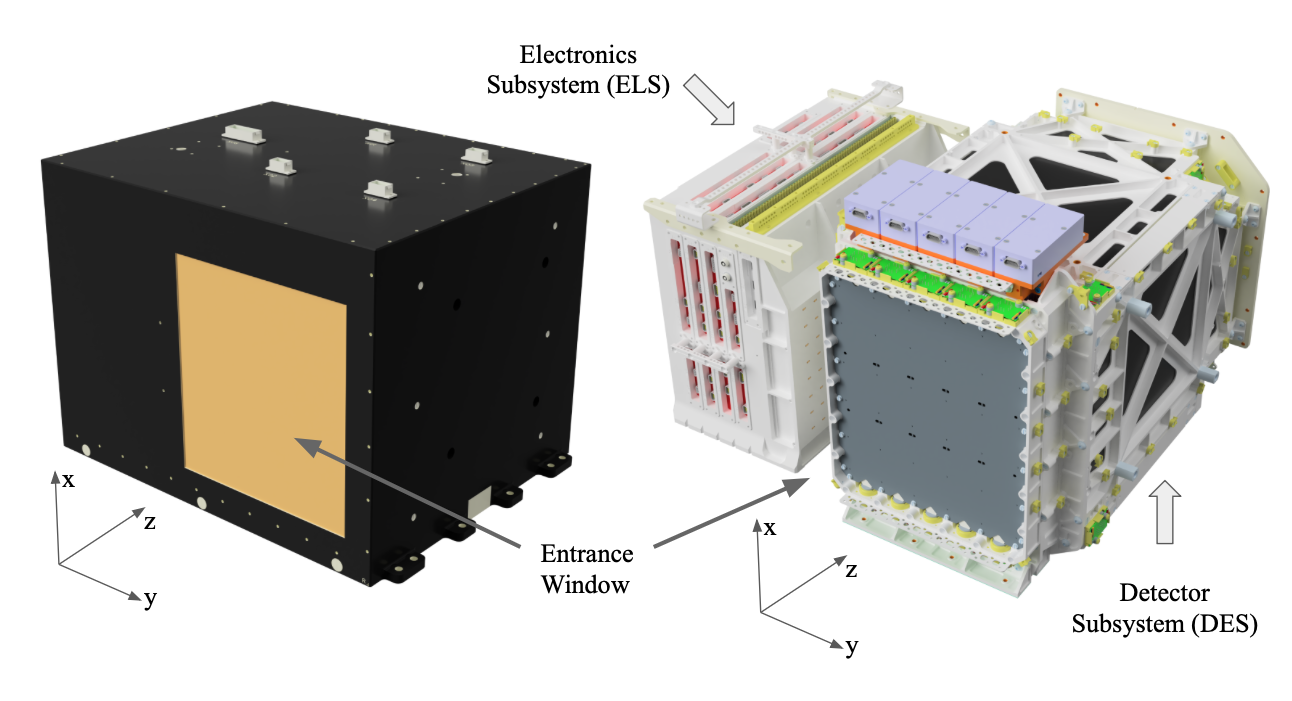
The instrument, shown in the figure, consists of:
- a first trigger plane TR1 (overall dimensions 200×180 mm 2) segmented in 5 plastic scint. bars (2 mm thick);
- an incident particle angle detector DD (“tracker”) made of five standalone tracking modules (“turrets”), each composed of three sensitive planes (“staves”);
- a second trigger plane TR2 (overall dimensions 150 x 150 mm 2) segmented in 4 plastic scint. bars (8 mm thick);
- an energy detector ED composed of:
– 12 plastic scint. planes (150 x 150 x 10 mm 3);
– 2 crystal (LYSO) scint. planes (overall dimensions 150 x 150 mm 2) segmented in 3 bars (50 mm thick);
- a containment detector CD (not shown here) surrounding the calorimeter on 5 sides, made of plastic scint. planes (4 lateral and 1 bottom plane), 8 mm thick
The energy range explored is 3 – 100 MeV for electrons and 30 – 200 MeV for protons.
The Qualification Model (QM) is completely assembled and surpass all the space qualification campaign.
The Flight Model (FM) is completely assembled and surpass all the space acceptance campaign. The HEPD-02 FM is currently assembled on-board CSES-02, in China, undergoing a qualification campaign at satellite level.
ASSEMBLY and INTEGRATION
The HEPD-02 QM and FM were completely assembled and integrated in the clean room facilities of INFN-Rome Tor Vergata. The sub-modules were delivered by the different groups of the collaboration and then assembled in sub-systems until building the final payloads.
THE FIRST BRICK

…growing…
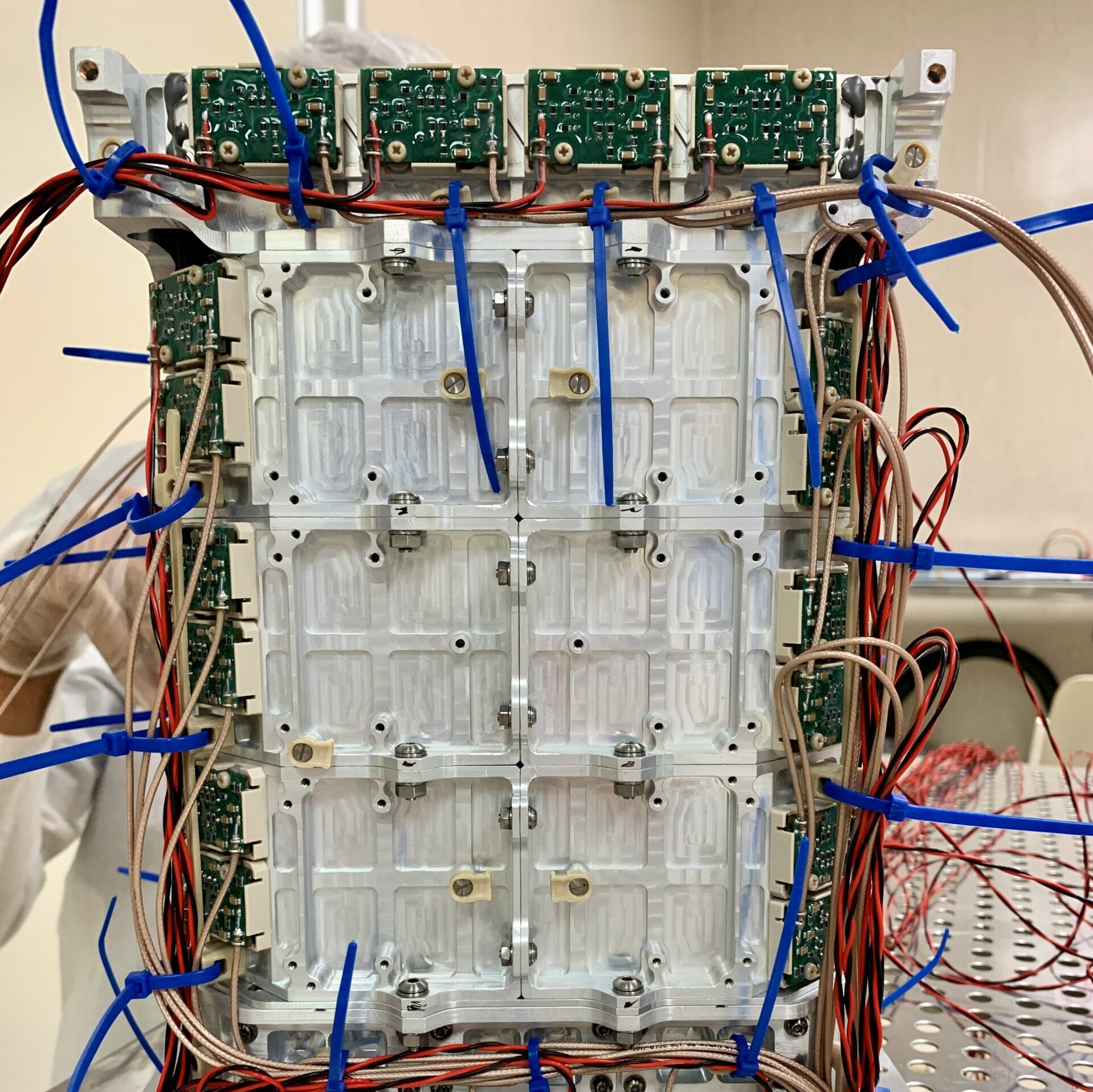
waiting for electronics
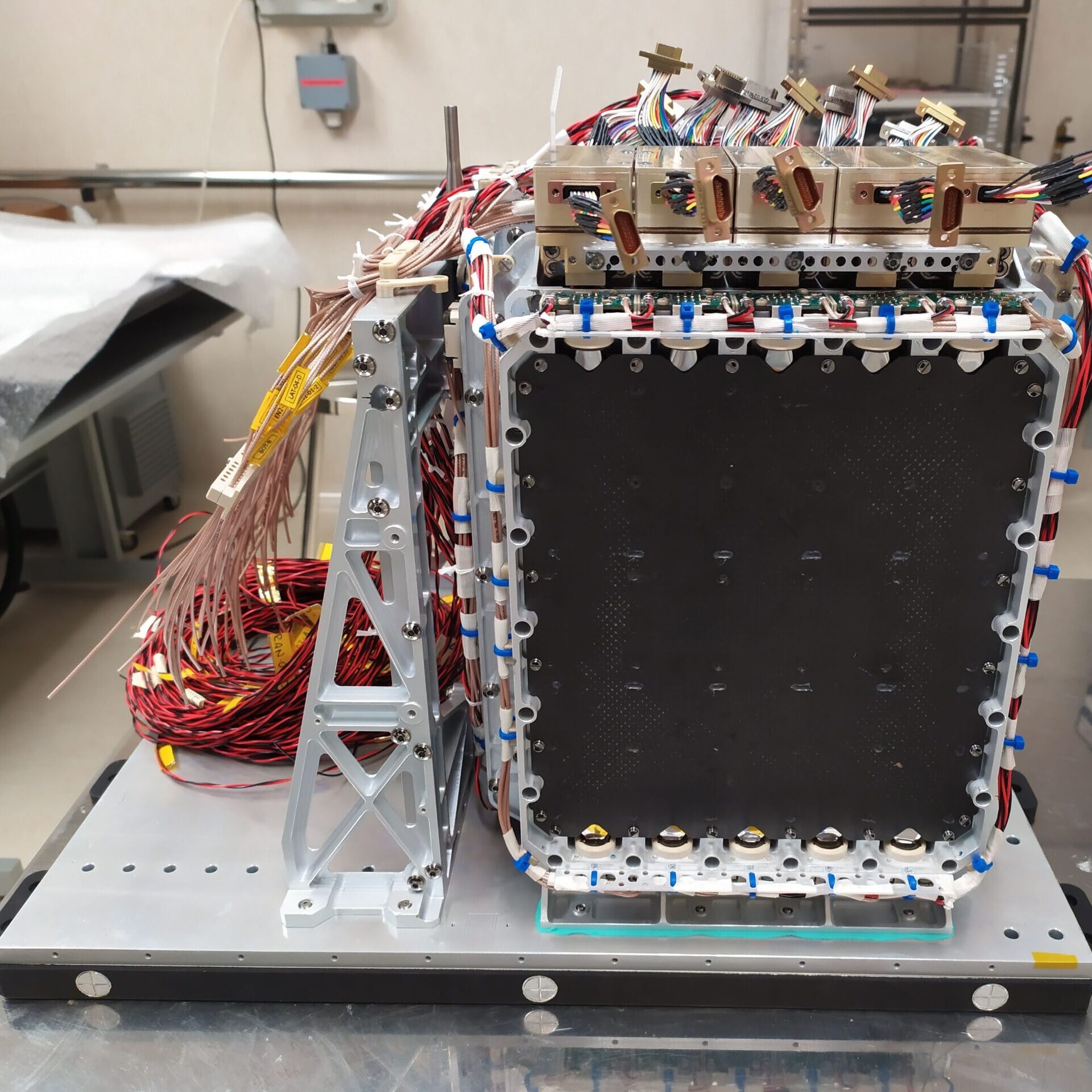
…and ready to be closed
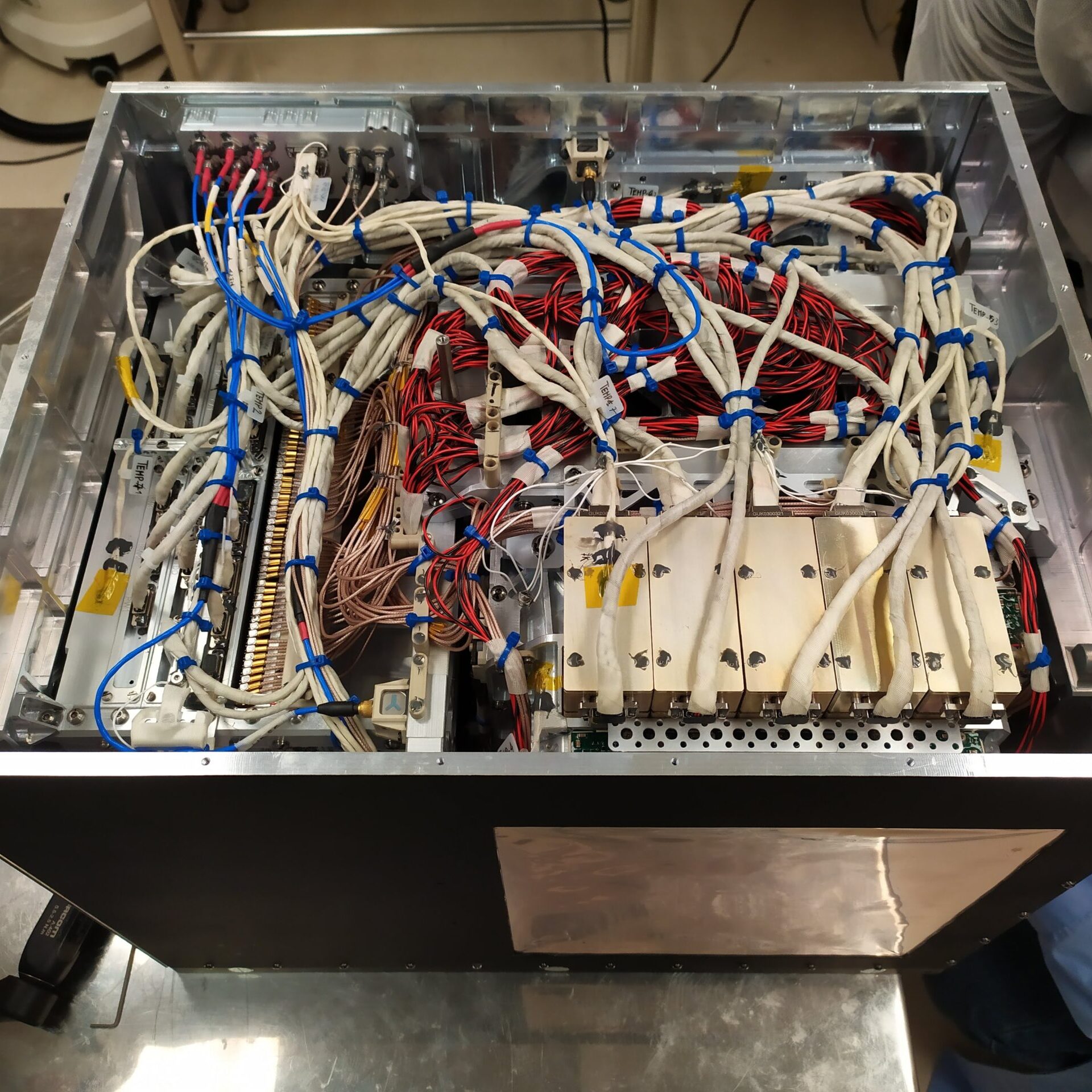
QUALIFICATION and ACCEPTANCE CAMPAIGN
The HEPD-02 Qualification Model and Flight Model have successfully completed their respective qualification and acceptance test campaigns. These tests were conducted in 2023 at SERMS, INAF, and IFAC-CNR.